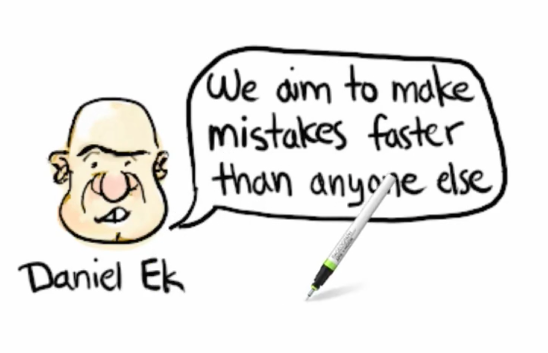
A one-on-one meeting is an irreplaceable part of managing a software development team.
These private meetings are your chance to truly connect with your developers and discover what makes them tick.
Use these one-on-one meetings to speak about your employees’ opinions on their workload, company, team members, and even personal life.
Discuss anything your employee wants to – this will send the message that you genuinely care about their input.
You’ll see why you want to uphold such an approach in just a minute; this article will walk you through all the benefits one-on-one meetings bring.
Table of Contents
Building Trust With Developers
The purpose of a one-on-one meeting is to support your developers; to discover their thoughts and feelings about their current workload, the company, the team, and even their personal life.
It’s the perfect opportunity to demonstrate you’re dedicated to their success. In other words, it’s an excellent environment for building trust.
Having a trusting relationship with your employees is invaluable; as author Mark Horstmann commented:

If your team trusts you, they’re much more likely to approach you with their perspectives, ideas, and problems, so that the two of you can discuss solutions together.
With that approach, your results are sure to improve.
By building trust, you create an environment of psychological safety – an understanding where employees know they will not be belittled when voicing their opinions, thoughts, and concerns.

Get unreal data to fix real issues in your app & web.
In other words, psychological safety ensures developers feel comfortable enough to speak freely and honestly.
In such an atmosphere, there are no barriers between you and your team members.
The organizational behavioral scientist Amy Edmondson introduced this concept, and she explains how to achieve psychological safety in the video below:
Essentially, it’s important to frame the work as a learning problem, acknowledge your own fallibility and always ask questions.
These three actions are all something you can easily accomplish in a one-on-one environment.
Mistakes happen to the best of us, but it’s much easier for employees to admit them to managers when they trust those managers, knowing they won’t be punished.
As such, building an accepting, inclusive culture via your one-on-ones is highly important – developers are much more likely to own up to mistakes, and you can then resolve them together.
Boosting Team Performance
The famous saying ‘There’s no I in TEAM’ shouldn’t be taken at face value.
Coined to emphasize collaboration, it ignores one essential factor – a team is made up of individual strengths working together.
The best-functioning teams incorporate different areas of expertise, juggling them to create one cohesive whole. A Gallup study revealed the following:
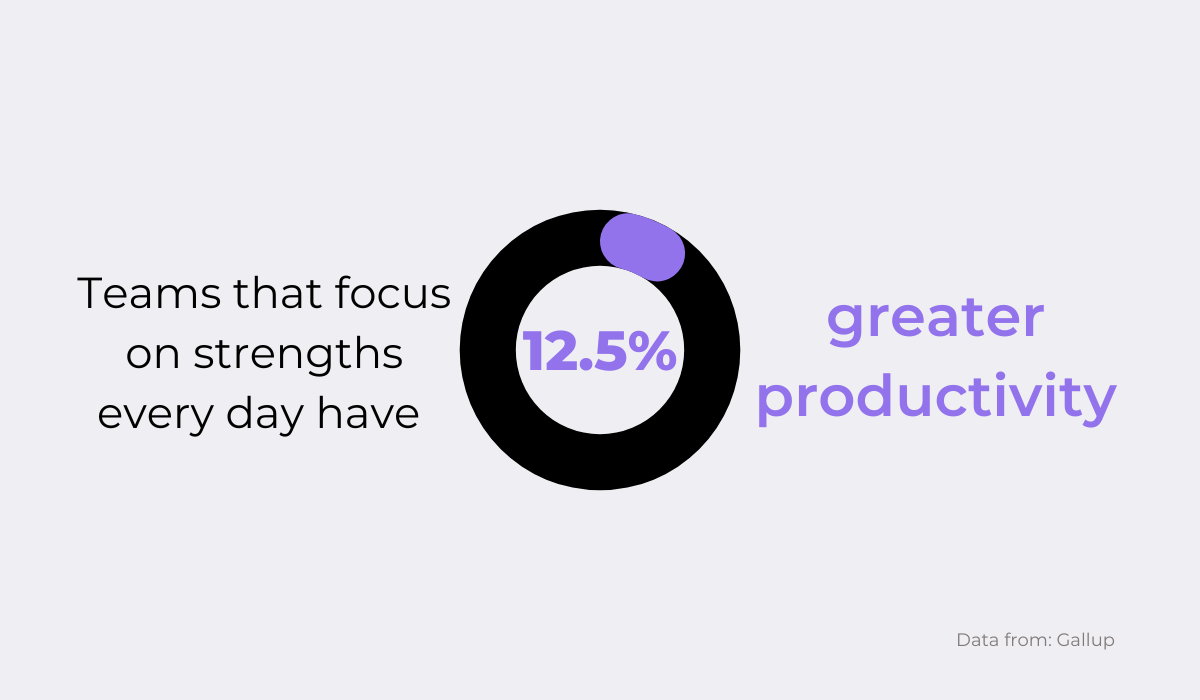
By focusing on each individual’s strengths daily, teams are guaranteed to improve their productivity and will likely achieve better results.
One of the easiest ways to discover your team members’ talents is by discussing them in a one-on-one. Ask your developers what they enjoy doing; ask about their goals.
For example, if one employee’s ambition is to be a principal architect, and another enjoys writing, you already have a clearer idea of how to delegate tasks.
The former developer can drive direction, whereas the latter can stay on top of the documentation.
Each developer’s personal preference will contribute to the team’s success, and your best bet to ask about their preferences is a one-on-one meeting.
You’ll then need to asses how their skill can contribute toward team objectives.
Julie Zhao summed up the phenomenon well:
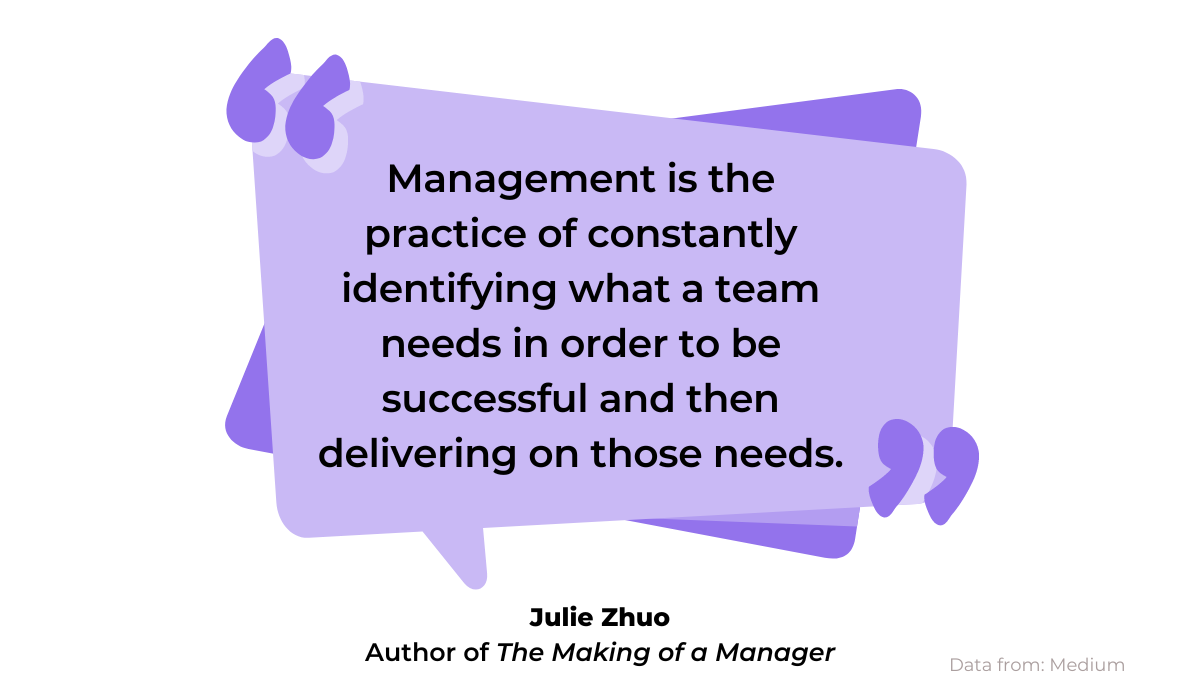
If a developer reveals they work best while pair programming, invest in some resources to facilitate that. If another hates dealing with bugs, suggest a bug reporting tool such as Shake.
Your team’s performance will skyrocket once you understand your employees’ working habits.
You can also think about the benefits in numbers. Andy Grove, a one-on-one meeting advocate, illustrated the profits below:
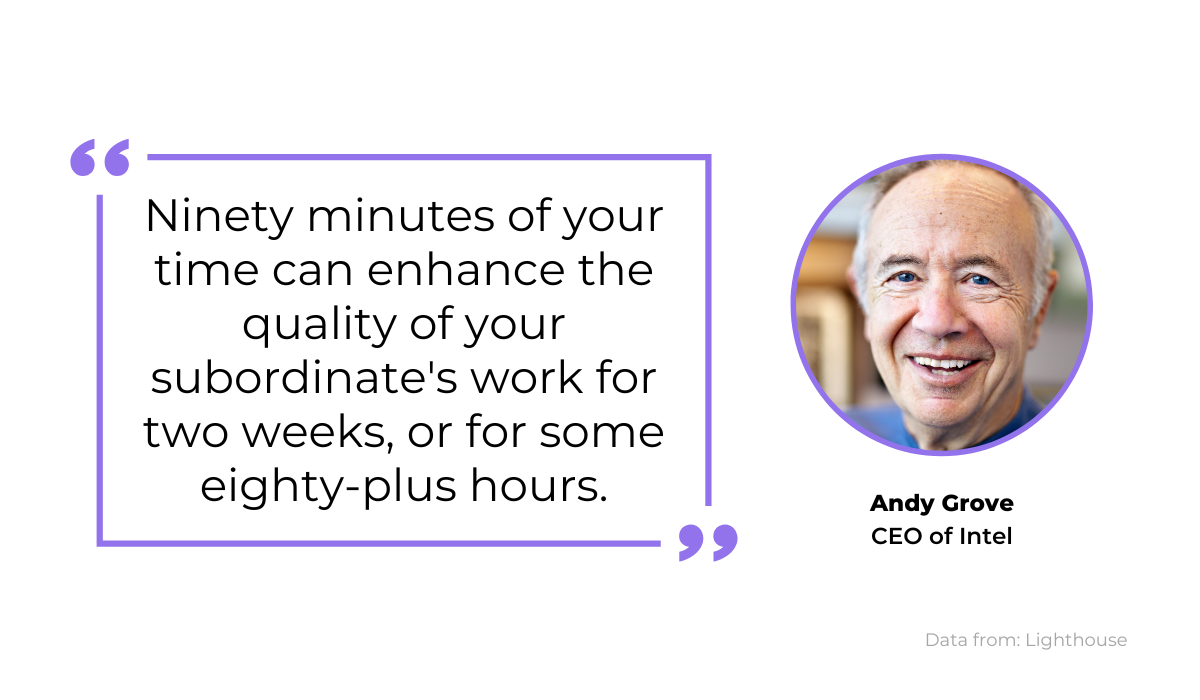
Only ninety minutes of your time in a 3600-minute workweek can increase one developer’s productivity for about two weeks.
Now imagine you have seven developers on your team. That’s only 630 minutes for a productivity boost equal to 14 weeks of higher efficiency.
When putting this way, the impact regular one-on-one meetings have on your team’s performance is undeniable.
Discussing Personal Growth
There’s not much chance of a junior developer being content with only knowing Python and Java their entire life.
Developers tend to love learning and often strive to continuously improve their skill set, learning new languages and frameworks.
However, sadly, not many managers make personal growth a priority, as the 2022 BetterWorks study showed:
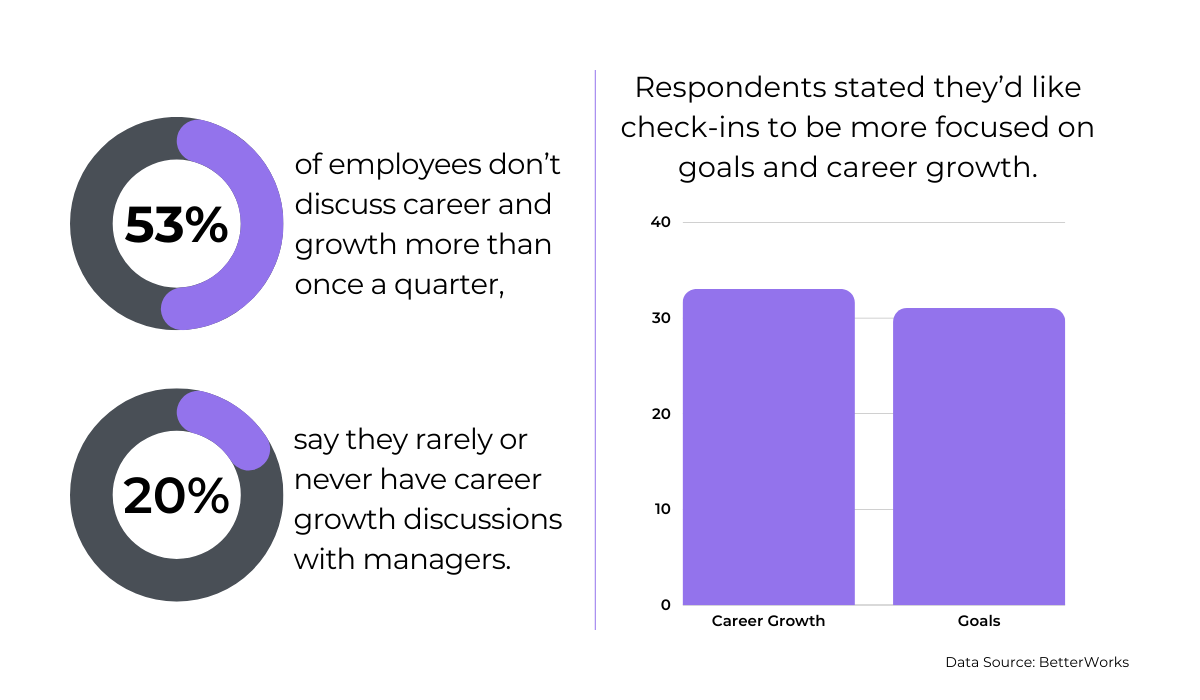
Managers rarely, if ever, devote time to speak about growth, despite employees desiring for check-ins to focus on career growth.
Take these figures as an incentive to discuss your developers’ personal growth during your one-on-ones.
Discover how they want their career to progress; are they happy working with the back-end? Are they interested in learning Beego and Echo?
Do they see themselves in a managerial role? If so, do they realize that they might have to sacrifice coding time?
Delving into your developer’s career aspirations will pay off for both them and the company.
Your team member will be glad to expand their knowledge and use those new skills to advance your company.
Echo has to be maintained by a single developer anyway, so why bring in a new hire if you can upskill your current developer?
A Harvard Business Review article summarized the idea well:
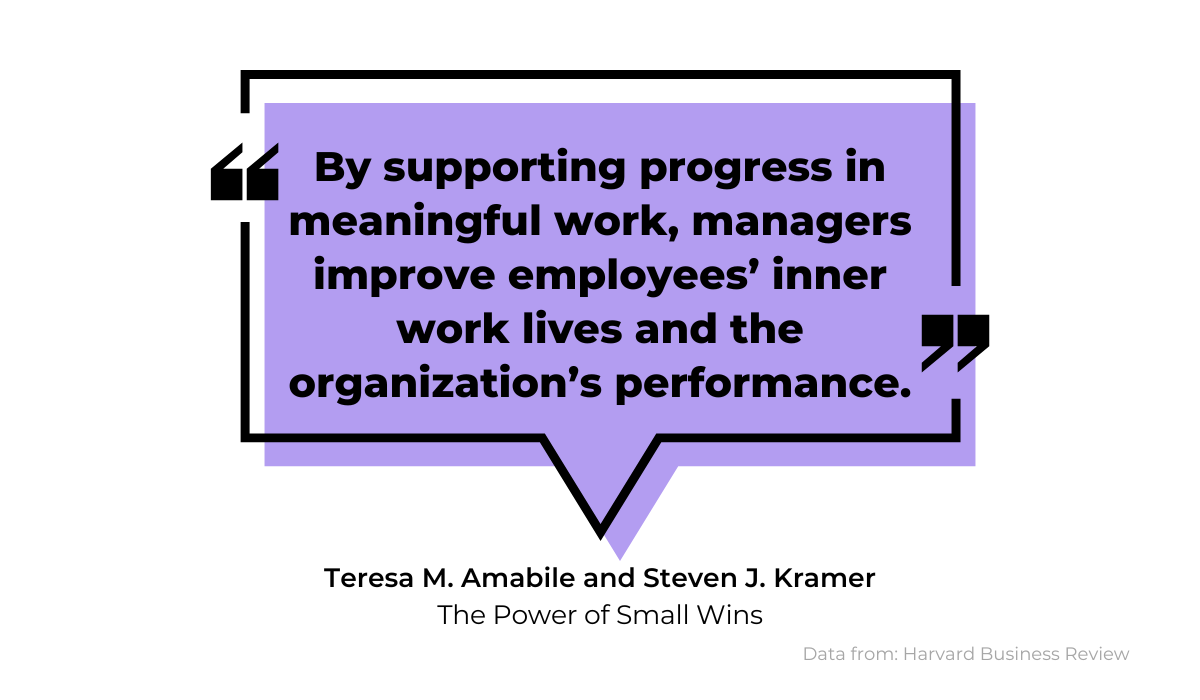
Use your one-on-one meetings to explore your developer’s professional development; you might just have the chance to both improve their workplace satisfaction and increase the organization’s productivity.
When companies use one-on-ones for diving into an employee’s personal growth, they receive mostly positive feedback.
Atlassian is a great example; their former VP of People explained their approach in this Quora thread:
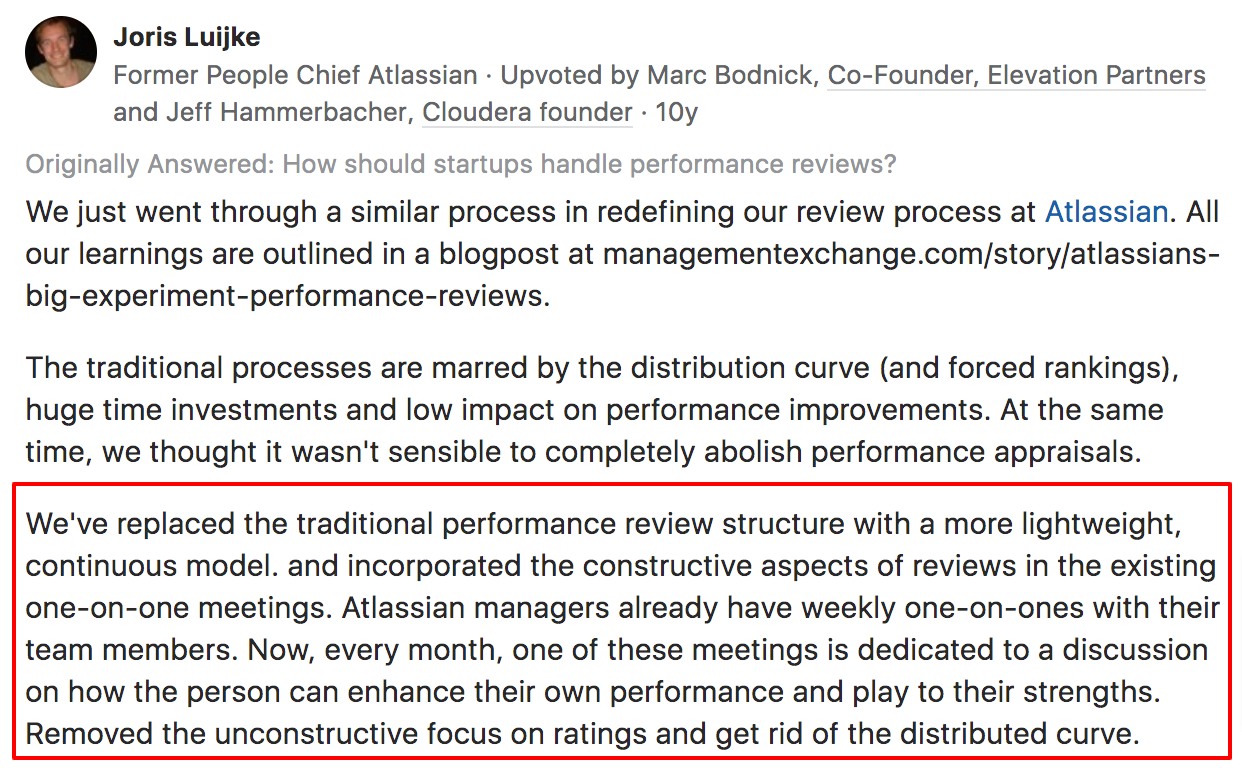
Atlassian dedicates an entire one-to-one meeting to focus on improving their employees’ performance and utilizing their strengths.
With this approach, there are no more unproductive ratings but a concentrated effort on facilitating an employee’s growth.
Improving Employee Retention
The technology (software) sector has the highest turnover rates across industries, trumping even retail and consumer products.
Embedded software engineers, in particular, are high in demand; they receive the most InMails per person in North America, regardless of occupation.
Take a look at the statistics below:
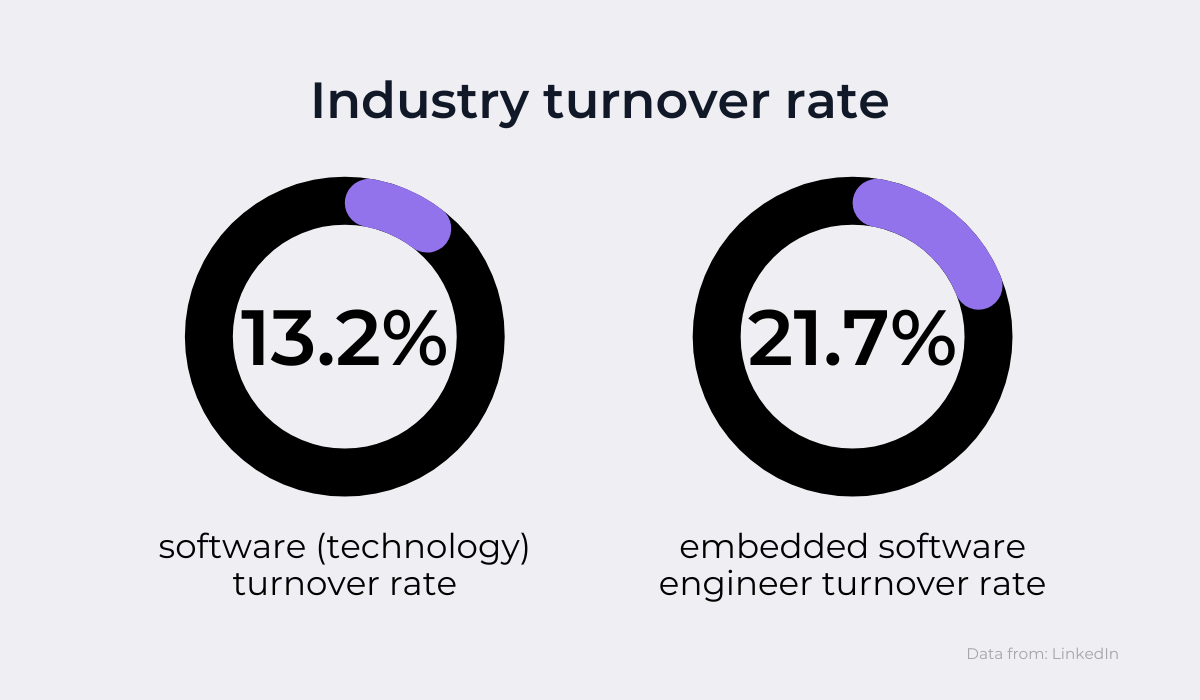
These high turnover rates are a result of increasing demand and compensation packages. As such, it’s crucial to retain your developers, and one-on-one meetings might just be your best bet.
A one-on-one meeting with your developer is your chance to ensure they feel happy at work; you can discuss their tasks, company culture, growth opportunities, and more.
Mathilde Collin, CEO of Front, prioritizes questions of happiness in her one-on-ones:
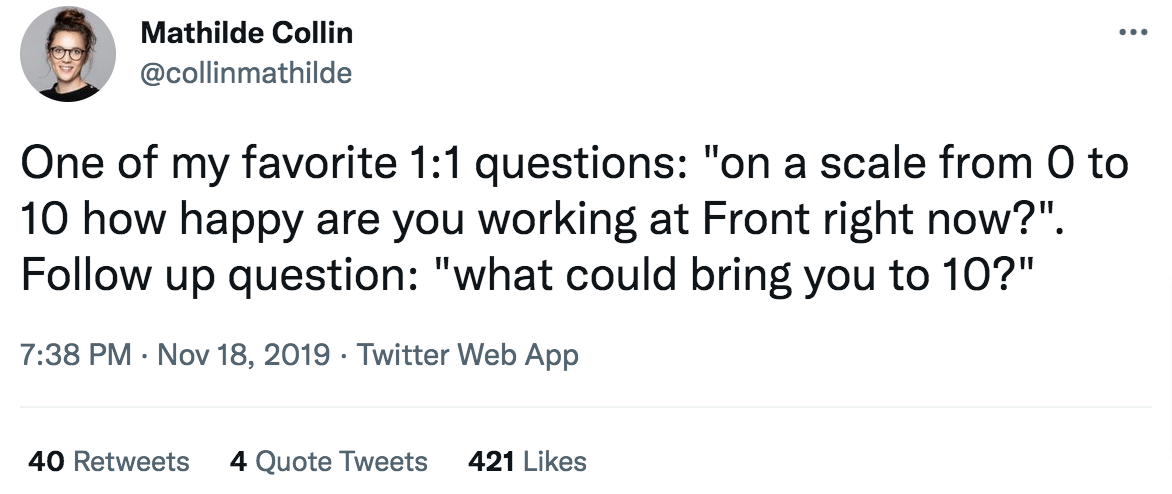
For example, consider your backend developers’ workload.
Backend development often boils down to databases, REST routes, and performance testing and is generally considered a little monotonous.
Use one-on-one meetings to double-check that your backend developers actually enjoy their work.
If they don’t, the two of you can then use the session to brainstorm ideas to promote engagement, such as introducing new projects or providing learning opportunities.
Jason Cole explained the dangers of disengaged employees succinctly yet effectively:
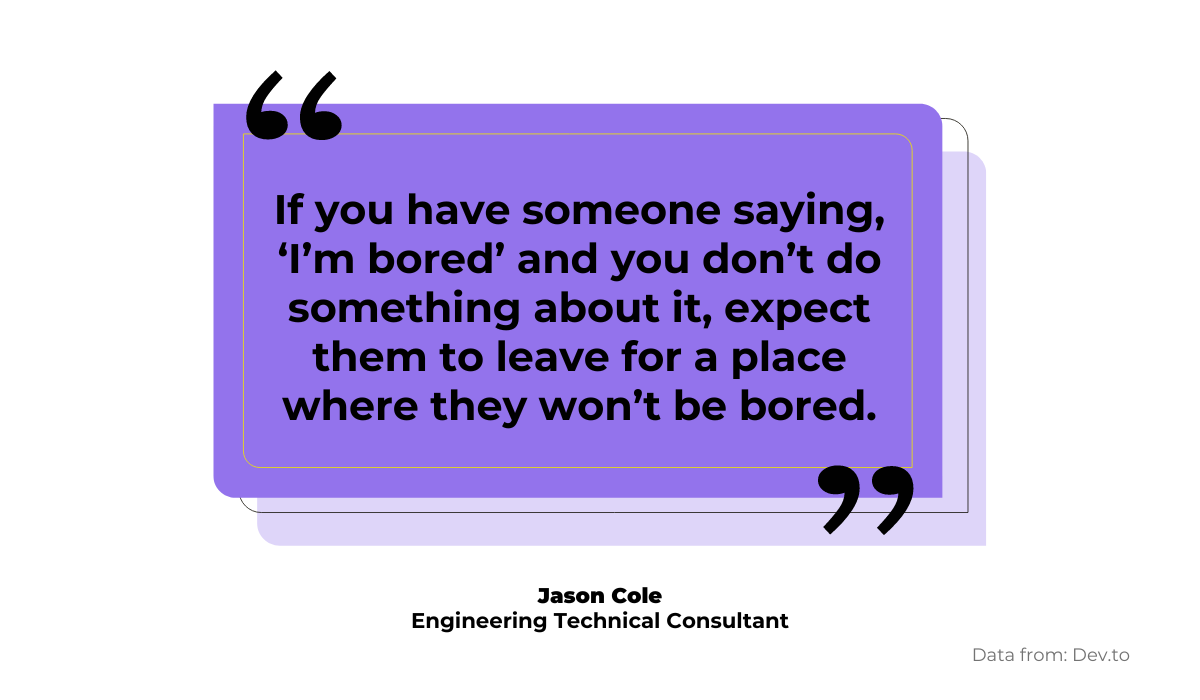
If your developers are bored, use the one-on-one to find new projects that will fulfill them.
The same principle applies salary-wise. If your developer wants a higher paycheck, a one-on-one meeting is your chance to discuss their compensation.
Although you might not be able to match the figure they’re asking for; you can still negotiate via other perks.
A paycheck isn’t the only form of compensation. You could also discuss remote work, flexible work hours, maternal and/or paternal leave (if they have children), vacation policy, etc.
The possibilities are endless, and you’re sure to reach a compromise during the one-on-one. It’s simply a matter of discovering how you can accommodate your developer’s needs.
Preventing Conflict
In a typical software development team, your developers manage technicalities, and you manage your developers.
In other words, your job boils down to people management, and, as unpleasant as it sounds, this also includes managing conflict.
Statistics show that conflict is frighteningly high in the workplace:
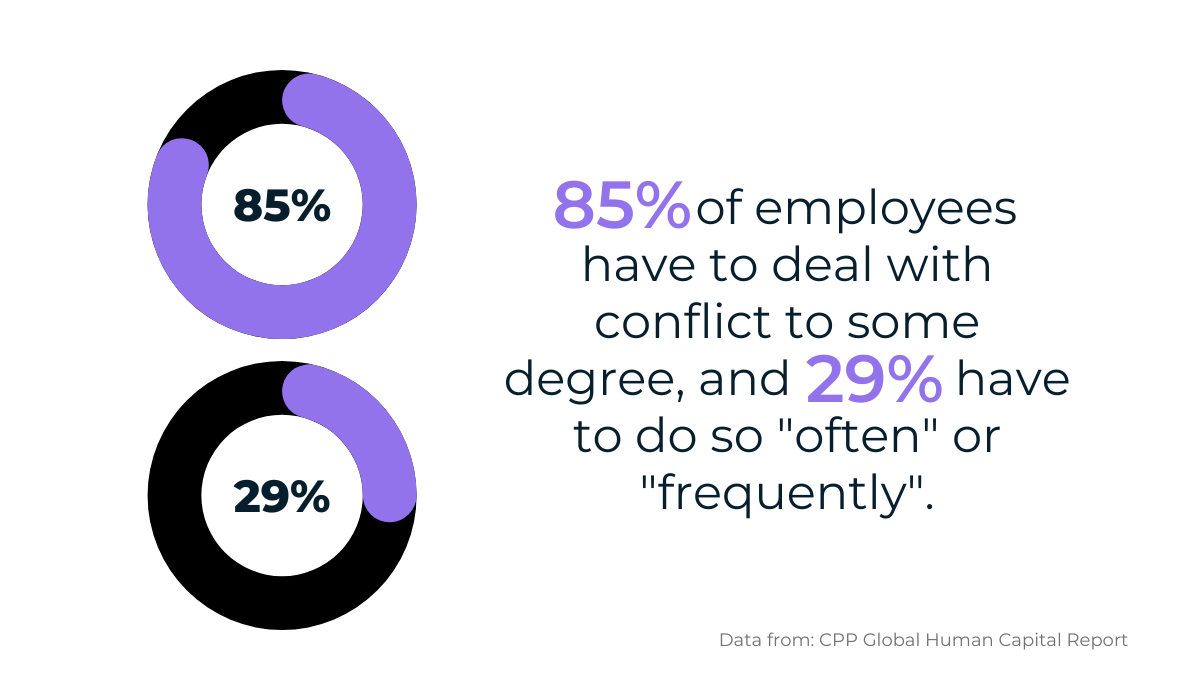
With such high numbers, you’d do well to find an effective method to preventing conflict in the first place. Luckily, one-on-one meetings can help you with this.
Your one-on-ones should be a safe space where your employees feel secure openly sharing their concerns, even about another team member.
As such, they’re likely to open up about the conflict in your one-on-one as soon as the discord begins.
This is a great help, as it’s always best to nip problems in the bud instead of letting them fester for too long.
This is also the founder of management software Lighthouse, Jason Evanish’s advice:
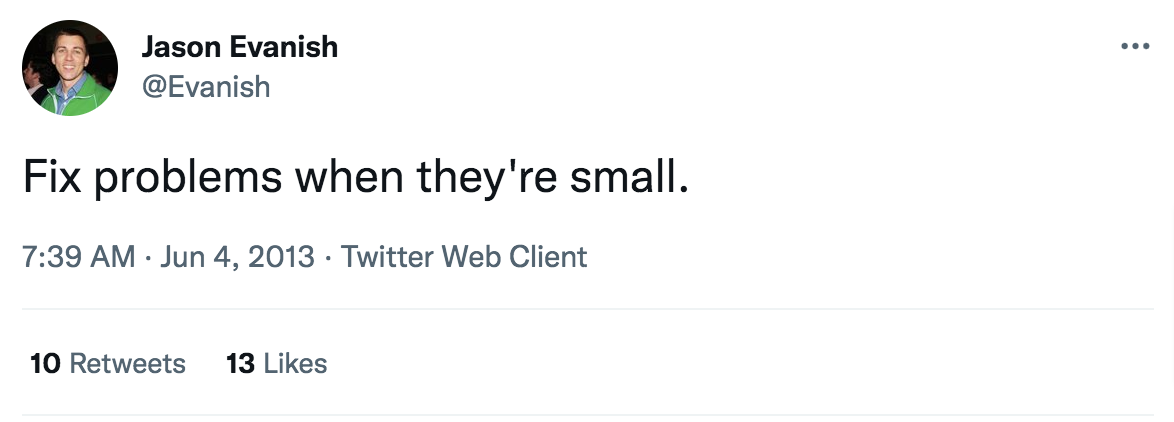
When you learn about problems at the beginning, they’re likely to be minor, and the fixes are much more straightforward.
Imagine a scenario where your team is in the middle of a project.
You attend your weekly one-on-ones, and one employee mentions they are late in receiving some code from the frontend team.
That employee only felt comfortable revealing this information because you and they were in a private, sheltered environment.
They certainly wouldn’t mention this in a team meeting in front of everyone.
Once you know about the data lag, you can approach your underdelivering developer in your one-on-one with them and get to the bottom of the matter.
One possible outcome would look like this:

As you can see, the first employee’s initial confession caused a domino effect of interventions that allowed your team to communicate clearly, and solve a potentially huge problem.
If that deliverable had been missing for much longer, the entire project could have been significantly delayed.
Receiving Employee Feedback
A manager’s responsibilities don’t end at offering feedback; you also have to receive feedback. One-on-one meetings are a two-way street.
Although you should provide constructive criticism of your developer’s performance, they should do the same for you.
For example, imagine your latest code review contained 200 comments. You spent hours dissecting the code, striving to teach your junior developer everything possible.
However, that extensive code review compiled in your junior’s best interest is actually demoralizing, and they only feel inadequate.
Your employee will mention this in a safe environment – a one-on-one meeting.
Once that happens, Josh Bersin, HR analyst, believes it’s easy to reach solutions:
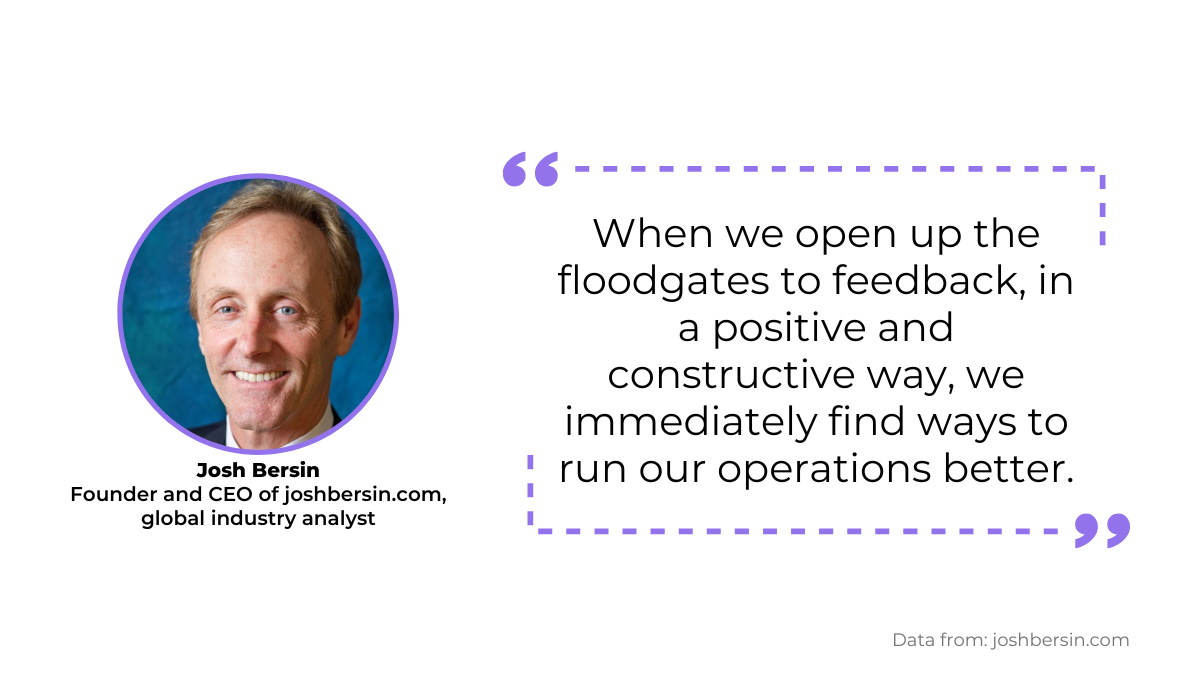
You can improve operations significantly for all involved if feedback is readily received.
Continuing the example before, a senior developer could check up on the junior’s code daily instead of leaving all criticism for the code review.
The sessions might serve for discussing general design, code style guidelines, and similar. That way, your junior developer still learns but won’t feel as attacked.
Your junior developer isn’t the only one who benefited from this exchange; you have as well.
The conversation has given you a window into your employees’ minds, showing you how they think. You’re gathering material on how to be a better manager.
John Baldoni, an HR expert, postulates that employees in good relations with their boss owe them feedback (if there is a safe environment):
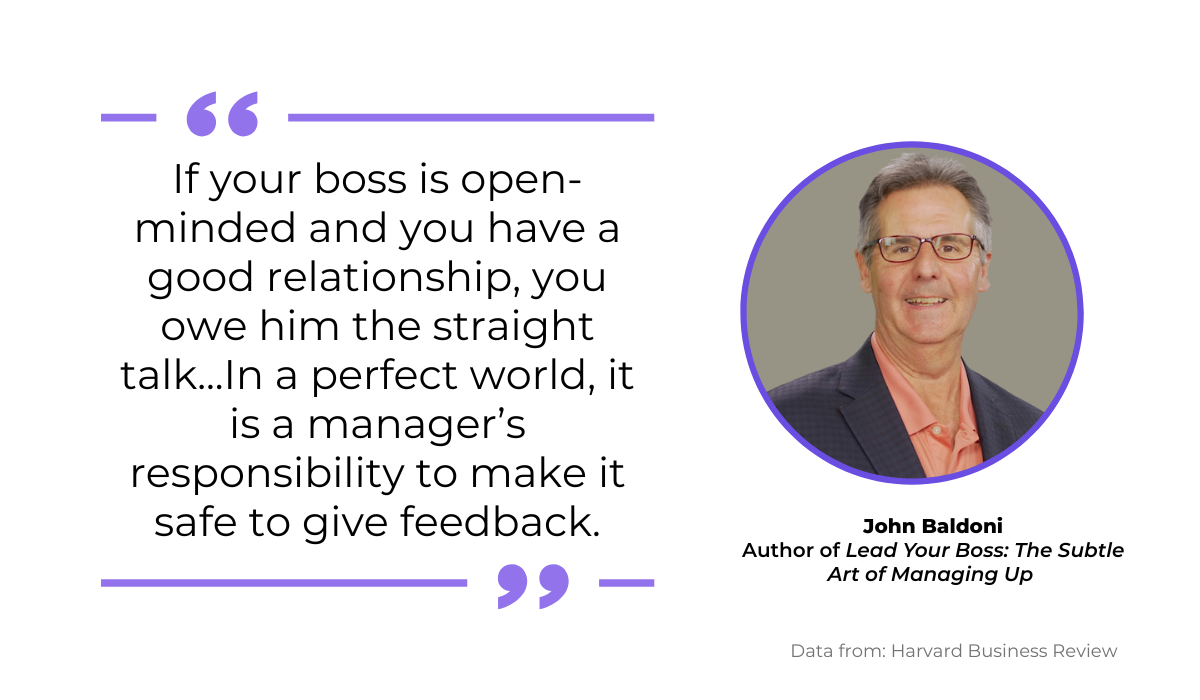
It’s hard to imagine the employee giving this feedback outside a one-on-one. What junior developer would critique seniors in a group environment?
They’d likely be afraid of appearing arrogant. It’s the private nature of a one-on-one meeting that allows feedback to flow freely.
In fact, a recent study revealed that one-on-ones are the most-valued organizational communication strategy, placing above team meetings and performance reviews:

The rating makes sense. The confidential one-on-one meeting is where communication, and feedback, can be given most honestly.
Improving the Company Image
Making one-on-ones a priority also has the added benefit of improving your company’s image.
If you’re doing your one-on-ones right, your business’s reputation as a collaborative, engaged workplace will grow. Word will get around that you truly value your employees’ opinions.
Accenture is an excellent example of a company’s image improving after implementing more frequent meetings.
The information technology giant scrapped its annual performance review system.
Instead, they incorporated a more fluid, personal approach, where managers frequently check in with employees.
Accenture CEO Pierre Nanterme explains their reasoning below:
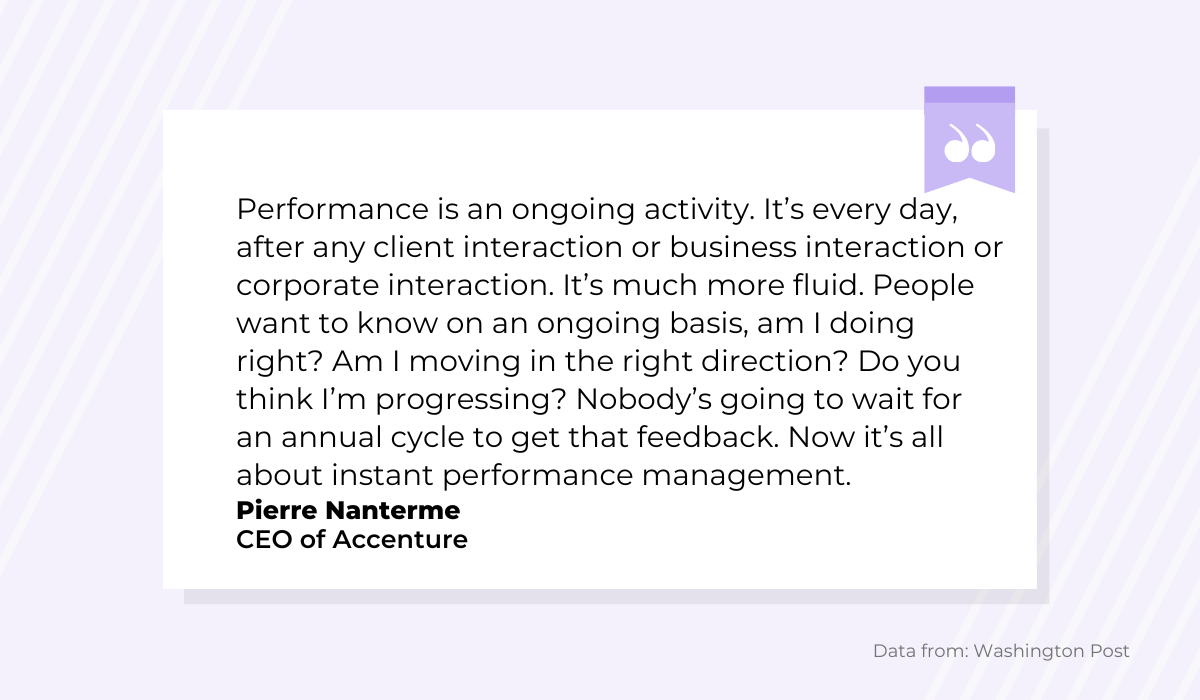
One-on-one meetings provide precisely this instant performance management.
Employees won’t have to wait one year to find out how they can progress; they’ll receive constant, continuous guidance.
This approach is highly valued, and good words about the company’s new direction are bound to spread quickly. Take a look at this Quora thread:
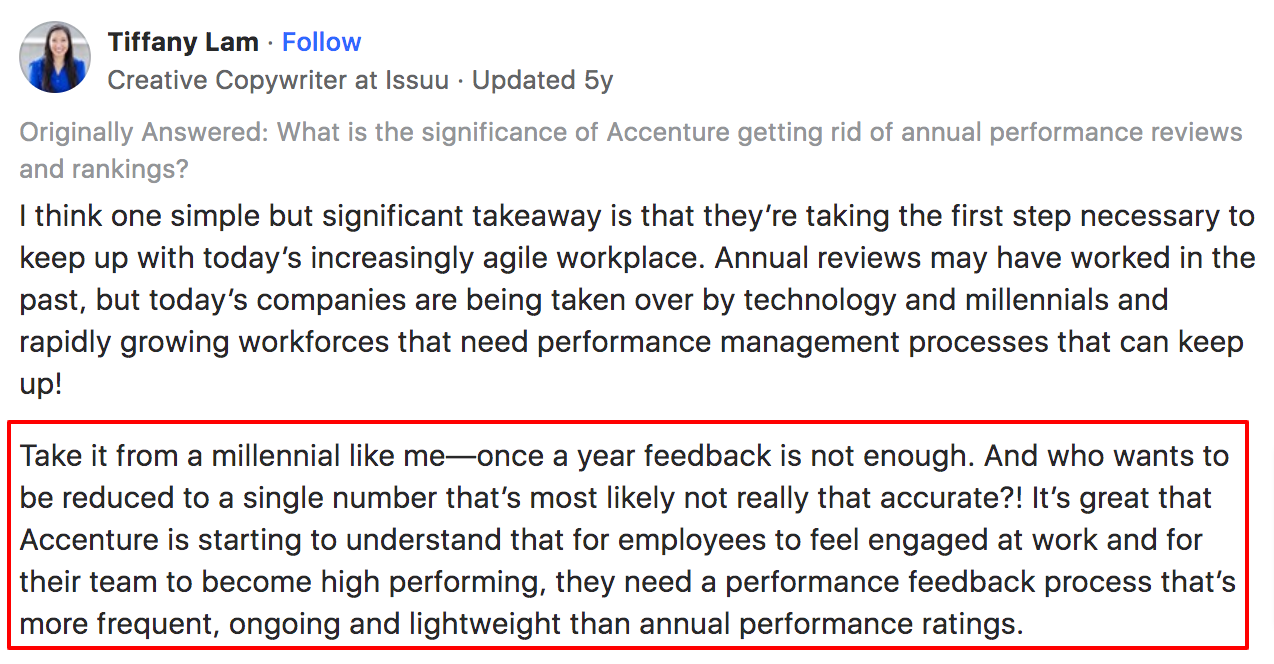
This millennial – the main up-and-coming hiring pool – is thrilled with Accenture’s example and thinks highly of the business.
As the news spreads, other potential hires are sure to take note; who knows, maybe this one decision could be the deciding factor for job-seekers?
This becomes especially relevant when you consider how easily developers can investigate employers.
There are multiple websites where workers can discuss and review company experiences, such as Glassdoor and Indeed.
These platforms make company culture transparent and accessible to all.
Consider, for example, this user’s Adobe review:
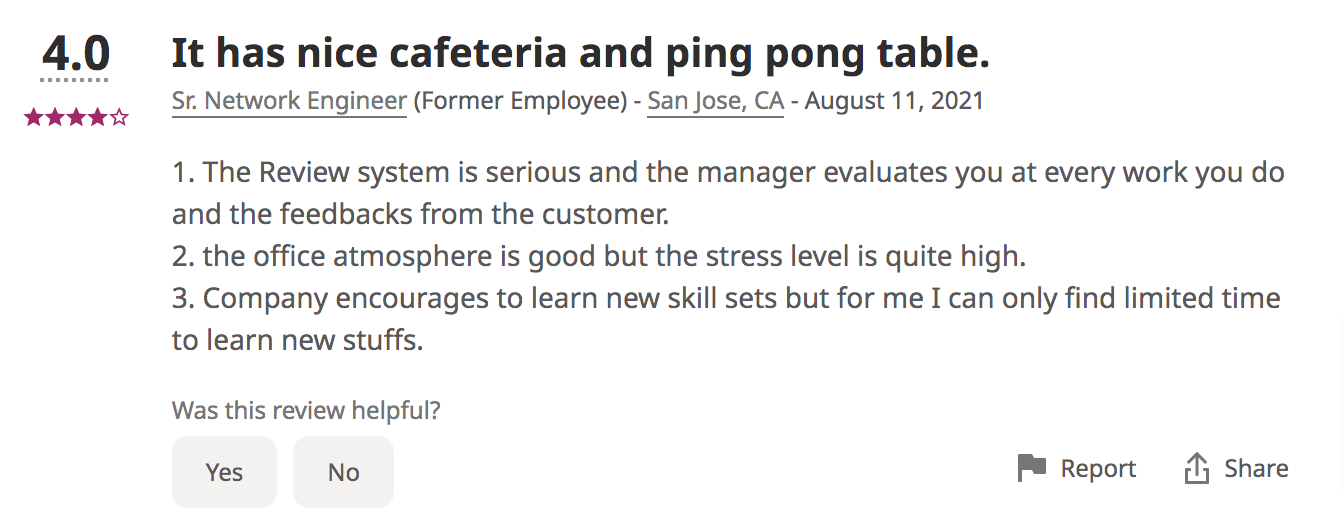
Everything is written in black-and-white, with no sugar coating.
Potential hires will see that managers take reviews and one-on-one meetings seriously – which must have contributed to the 4.0 rating – but will also see that it’s a high-stress environment.
This brutally honest, brazen comment makes it evident that this engineer is being truthful.
If a job-seeker who doesn’t mind stress and greatly values management engagement sees this review, he’s likely to view the company positively.
Conclusion
Efforts to host regular one-on-one meetings will indubitably pay off in the long run.
It is an excellent opportunity to speak about your employees’ personal growth, and honest conversations will likely increase retention rates.
Furthermore, one-on-one meetings tend to build trust, creating a safe enough space for your developers to give honest feedback.
These individual meetings are also helpful on a macro-level; one-on-one sessions are proven to boost team performance and prevent conflict between team members.
Finally, one-on-one meetings can even improve your company’s image; can you think of anyone who wouldn’t want that?

